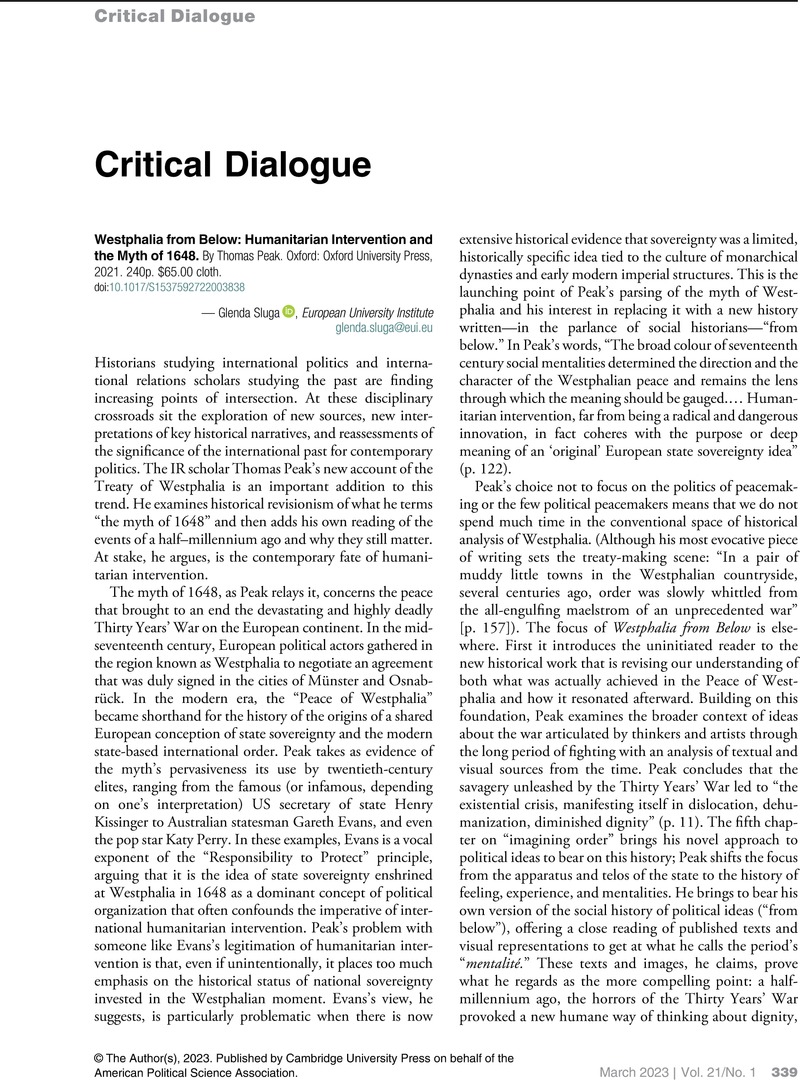No CrossRef data available.
Article contents
Westphalia from Below: Humanitarian Intervention and the Myth of 1648. By Thomas Peak. Oxford: Oxford University Press, 2021. 240p. $65.00 cloth.
Review products
Westphalia from Below: Humanitarian Intervention and the Myth of 1648. By Thomas Peak. Oxford: Oxford University Press, 2021. 240p. $65.00 cloth.
Published online by Cambridge University Press: 24 March 2023
Abstract
An abstract is not available for this content so a preview has been provided. Please use the Get access link above for information on how to access this content.

- Type
- Critical Dialogue
- Information
- Perspectives on Politics , Volume 21 , Issue 1: Special Section: Las Américas , March 2023 , pp. 339 - 340
- Copyright
- © The Author(s), 2023. Published by Cambridge University Press on behalf of the American Political Science Association


